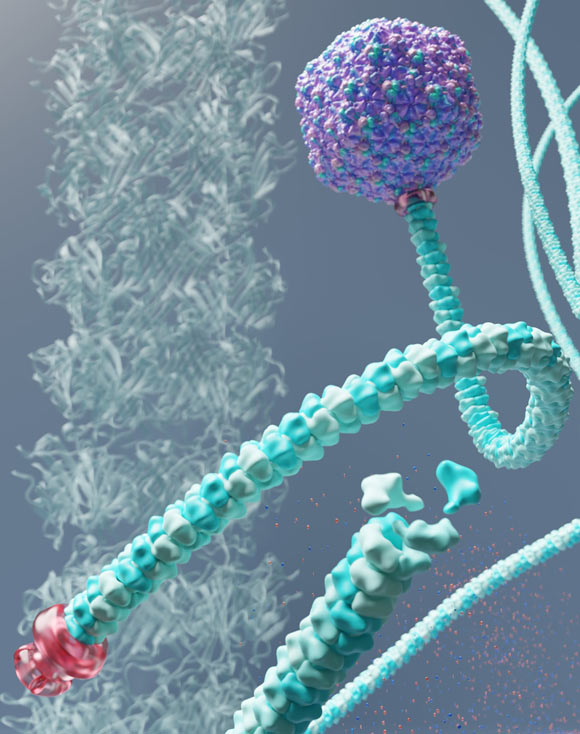A bacteriophage (bacteria-infecting virus) called P74-26 and nicknamed ‘Rapunzel bacteriophage’ lives in inhospitable hot springs and preys on Thermus thermophilus, one of the toughest bacteria on the planet.
Bacteriophages are ubiquitous viruses that selectively and specifically infect their bacterial host.
The overwhelming majority of phages belong to the order Caudovirales, which consist of a capsid that contains the double-stranded DNA genome, and a tail.
The tail is essential for host recognition and viral attachment, and therefore successful infections.
“Bacteriophages, or phages for short, are everywhere that bacteria are, including the dirt and water around you and in your own body’s microbial ecosystem as well,” said Emily Agnello, a graduate student at the University of Massachusetts Chan Medical School.
While most phages have short, microscopic tails, P74-26 has a tail 10 times longer than most and is nearly 1 micrometer long, about the width of some spider’s silk.
Not only does P74-26 have an extremely long tail, but it is also the most stable phage, allowing it to exist in and infect bacteria that live in hot springs.
“Each phage tail is made up of many small building blocks that come together to form a long tube,” Agnello said.
“Our research finds that these building blocks can change shape, or conformation, as they come together.”
“This shape-changing behavior is important in allowing the building blocks to fit together and form the correct structure of the tail tube.”
The researchers used high-power imaging techniques as well as computer simulations and found that the building blocks of the tail lean on each other to stabilize themselves.
“We used a technique called cryo-electron microscopy, which is a huge microscope that allows us to take thousands of images and short movies at a very high magnification,” Agnello said.
“By taking lots of pictures of the phage’s tail tubes and stacking them together, we were able to figure out exactly how the building blocks fit together.”
They found P74-26 uses a ‘ball and socket’ mechanism to sturdy itself. In addition, the tail is formed from vertically stacking rings of molecules that make a hollow canal.
“I like to think about these phage building blocks as kind of like Legos. The Lego has studs on one side and the holes or sockets on the other,” said Dr. Brian Kelch, a researcher at the University of Massachusetts Chan Medical School.
“Imagine a Lego where the sockets start off closed. But as you start to build with the Legos, the sockets begin to open up to allow the studs on other Legos to build a larger assembly.”
“This movement is an important way that these phage building blocks self-regulate their assembly.”
Compared with most phages, P74-26 uses half the number of building blocks to form stacking rings that make up the tail.
“We think what has happened is that some ancient virus fused its building blocks into one protein. Imagine two small Lego bricks are fused into one large brick with no seams. This long tail is built with larger, sturdier building blocks,” Dr. Kelch said.
“We think that could be stabilizing the tail at high temperatures.”
The study appears in the Journal of Biological Chemistry.
_____
Emily Agnello et al. 2023. Conformational dynamics control assembly of an extremely long bacteriophage tail tube. Journal of Biological Chemistry, in press; doi: 10.1016/j.jbc.2023.103021








